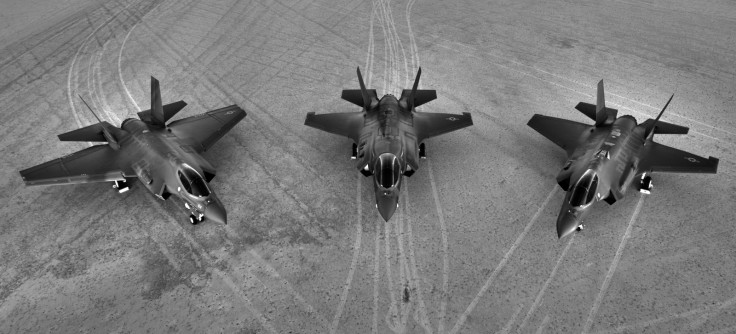How the F-35 Joint Strike Fighter can be used to track and destroy North Korean ICBMs
The F-35 fighter has enough sensors and tracking technology to spot ICBMs.

The US Air Force's sensor-laden F-35 Joint Strike Fighter could come in handy to track and intercept enemy ICBMs, and experts say a few of the advanced jets working in tandem can do the job to a surprisingly accurate degree.
Experts have said that there is no completely watertight solution when defending a full-blown nuclear attack, even from a country like North Korea. But in 2014, Northrop Grumman – along with US' Missile Defense Agency (MDA) – conducted several experiments on the F-35, and a small group of journalists were shown the results of this experiment earlier this month, reported Defense One (DO). As it turns out, the F-35s could be used to track ICBMs with their built-in sensors and other tracking tech.
The best way to stop an ICBM, noted the report, is to attack it at its boost phase, or the initial launch phase in which a rocket lifts the warhead to the edge of the atmosphere. If the US Air Force (USAF) has to stop, for example, a nuclear missile from North Korea during this phase, they need to get close enough to the launch pad. But this cannot happen because of the presence of anti-aircraft weapons.
This is one of the reasons, the DO report stated, that the Pentagon is looking at futuristic systems like lasers mounted on drones to bring missiles down.
The F-35 has a Distributed Aperture System (DAS) which consists of about six electro-optical and infrared sensors placed all over the aircraft. The DAS gives the pilot a helmet-mounted display that allows the operator to 'see through' the aircraft in all directions. Incoming aircrafts or missiles can easily be spotted by the pilot using this tech.
MDA's experiment using the DAS was to see if this tracking tech can spot ICBMs. They were looking for a way to convert data from the sensors onboard and generate a 3D moving picture of an ICBM's trajectory. This was done through algorithms devised by Northrop and MDA's Enterprise Sensor Lab.
"That information can go straight to the Patriot [missile system], THAAD, or anywhere else, who has communication with that platform," said John "Bama" Montgomery, a business development manager at Northrop's ISR & Targeting Division.
"You can give that information to a shooter. That shooter now has information to go and put his information in the right place. Thus the radar doesn't have to search. It goes, 'I know where it is; it's right there'," he explained.
The DAS is not intended to replace infrared satellites, or other sea- and ground-based detection systems. Rather, it can help with providing more data to work with, the DO report stated.

Development of the F-35 has been plagued with issues over the last few years with reports even calling the project a failure. Originally envisioned as a replacement to the ageing F-16 and other fighters which were in need of upgrades, the F-35 was supposed to be the one fighter that the US could fall back on, for all three branches of the military.
The US military's most expensive fighter at the time of development, the F-35 was estimated to cost almost a trillion dollars to keep a fleet up and running for its life of 50 years. Issues with development and deployment, however, kept slowing down the F-35 programme. In January this year, it was reported that the F-35 will not be ready for active service in the 2018- 2019 service year.





















